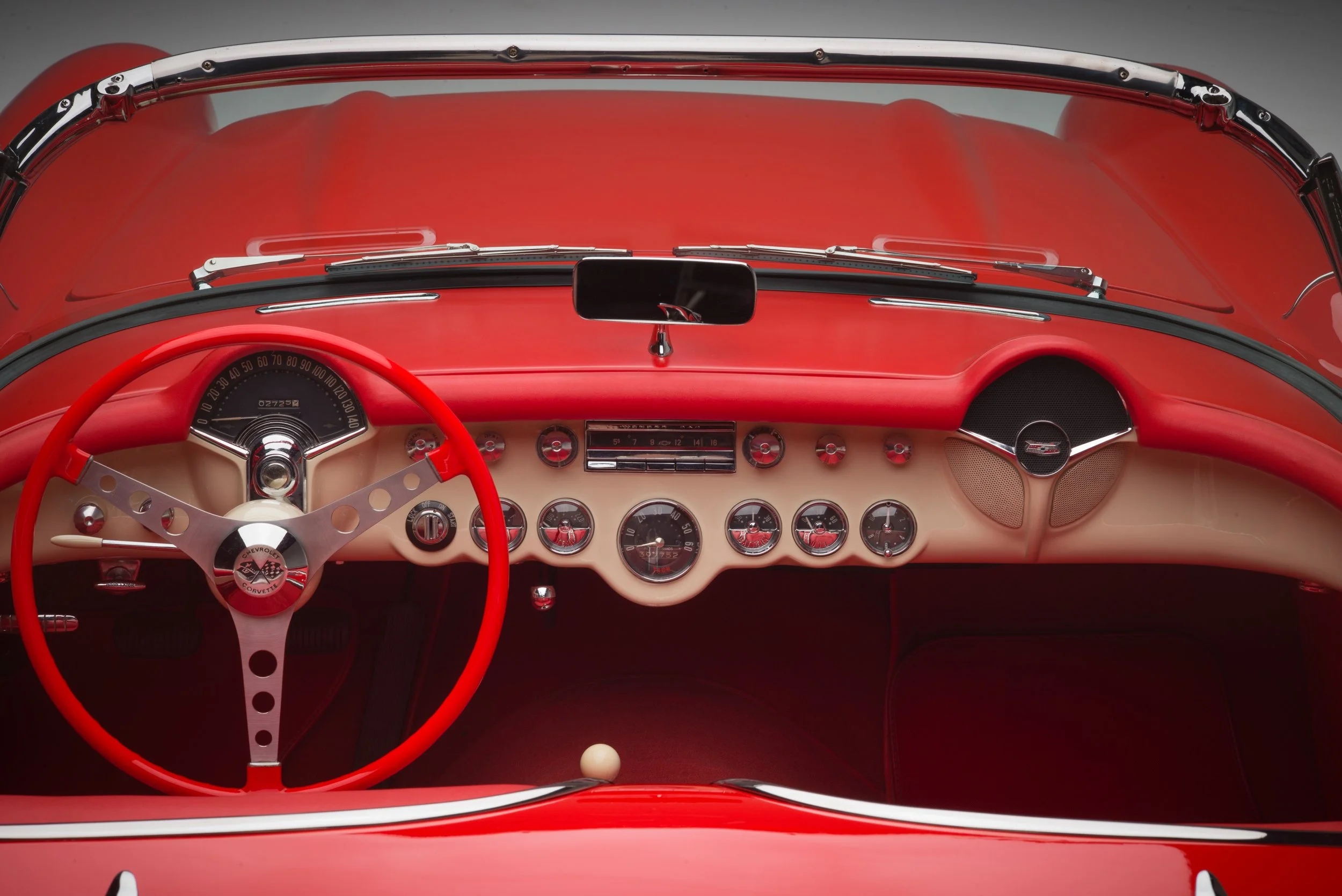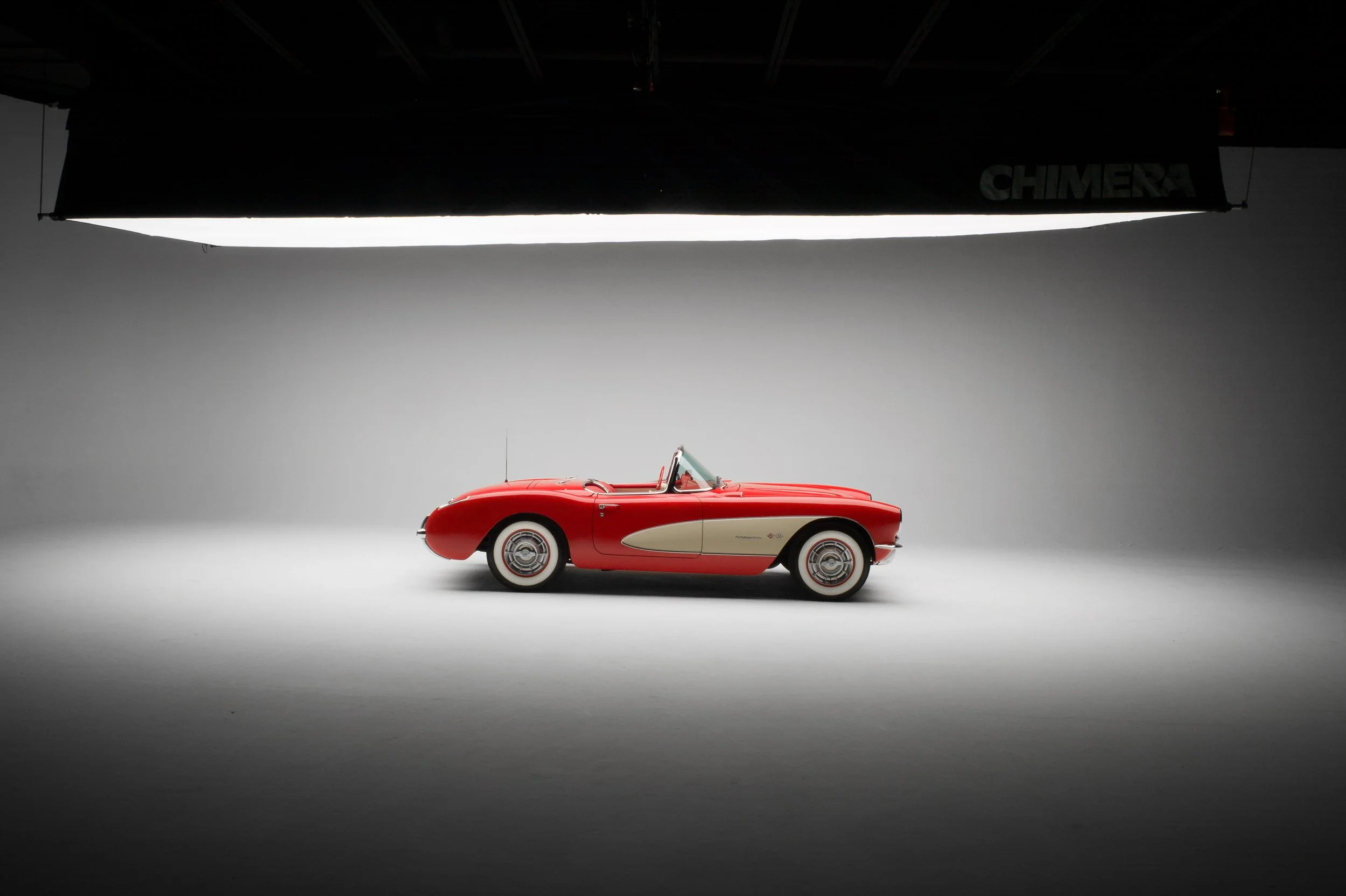1957 Chevrolet Corvette Fuel-Injected







1957 Chevrolet Corvette Fuel-Injected
Chevrolet clearly had the visual formula right from the start with its sporty Corvette, so product planners didn’t see the need to tinker too much with a successful car. In 1957, the only overt change to the sports car was the chance to finish its bodyside coves in a contrasting color for $19.40.
- YEAR & MAKE - 1957 Chevrolet
- MODEL NAME - Corvette Fuel-Injected Convertible
- SERIES - E2934
- MODEL/BODY/STYLE NUMBER - Model 2934
- BODY TYPE - 2 Door, 2 Passenger Convertible
- BODY BY - Fisher Body Corp
- # CYLS. - V8
- TRANSMISSION TYPE & NUMBER - 4 Speed Manual Floor Shift Transmission
- WEIGHT - 2,730
- ESTIMATED PRODUCTION - 1,040
- HP - 283
- C.I.D. - 283
- WHEELBASE - 102″
- PRICE NEW - $3,465
It was under that stylish exterior that the real changes were happening. A four-speed manual transmission finally entered the options list midway through 1957. That transmission could be mated to Chevrolet’s newly bored-out 265 engine, now the iconic 283-cu.in. small-block V-8 that defined a generation of sporting performance. Depending upon the fuel delivery system a buyer selected, that V-8 was good for up to the magical number of one horsepower per cubic inch—a feat accomplished through the technological wonder of fuel injection.
Ramjet Fuel Injection was the big news for 1957. While carmakers, particularly Mercedes-Benz, had experimented with fuel injection in the past, it had always proved overly complex and prohibitively expensive. Chevrolet, though, set out to change that.
A development team was put on the project, working under tight time constraints. John Dolza of the Rochester (carburetors) Division and Corvette chief engineer Zora Arkus-Duntov joined forces to head up the effort, which evaluated two approaches: Timed injection and continuous spray injection. Timed mechanical injection, as used in the Mercedes-Benz 300SL, was quickly ruled out as being too complex and costly, and development proceeded on a continuous spray method.
In the continuous spray system eventually produced by Rochester, the nozzle is located directly outside each cylinder, spraying into the intake port. There are essentially only three components to the final system that was installed on 1957s Corvettes: An air meter, fuel meter, and intake manifold. The air meter signals the fuel meter based on engine load fluctuations; subsequently, the fuel meter uses that vacuum control signal to regulate the fuel flow to the injection nozzles, while the intake manifold distributes the rammed airflow.
The final product was a Ramjet fuel injection system that was reasonably affordable to manufacture; increased top-end output; and spread power over a wider RPM band. In practice, the results were staggering: a car that could rev cleanly to 7,000 RPM, yet idle at 900 RPM, enabling a 283hp version to do 0-60 MPH in just 5.7 seconds in a period Road & Track test. A small, tasteful checkered flag emblem on the fender was the only hint at what lay under the hood to differentiate this potent offering from less rarefied Corvettes.
The Ramjet option Corvette had four variations and two horsepower ratings. RPO 579A and 579C made 250hp, with 9.5:1 compression and hydraulic lifters. RPO 579B and the race-ready 579E both boasted the magical 283hp milestone, with 10.5:1 compression, solid lifters and a Duntov-designed cam. When combined with other available options such as a racing suspension, customers could easily take a 1957 Corvette straight from the showroom to the strip or track and dominate their class.
Unfortunately, each of the variant fuel injection units produced by Rochester in 1957 had their share of reliability problems, and many Chevrolet dealers simply didn’t know how to service the new technology. As a result, the pricey $500 option wasn’t often chosen, yielding only 1,040 fuel-injected cars from the total 1957 Corvette production run of 6,339. Many later had their troublesome fuel-injection setups removed and replaced with carbureted systems, leaving unmolested Ramjet Corvettes among the most advanced and desirable sports cars of the era.
